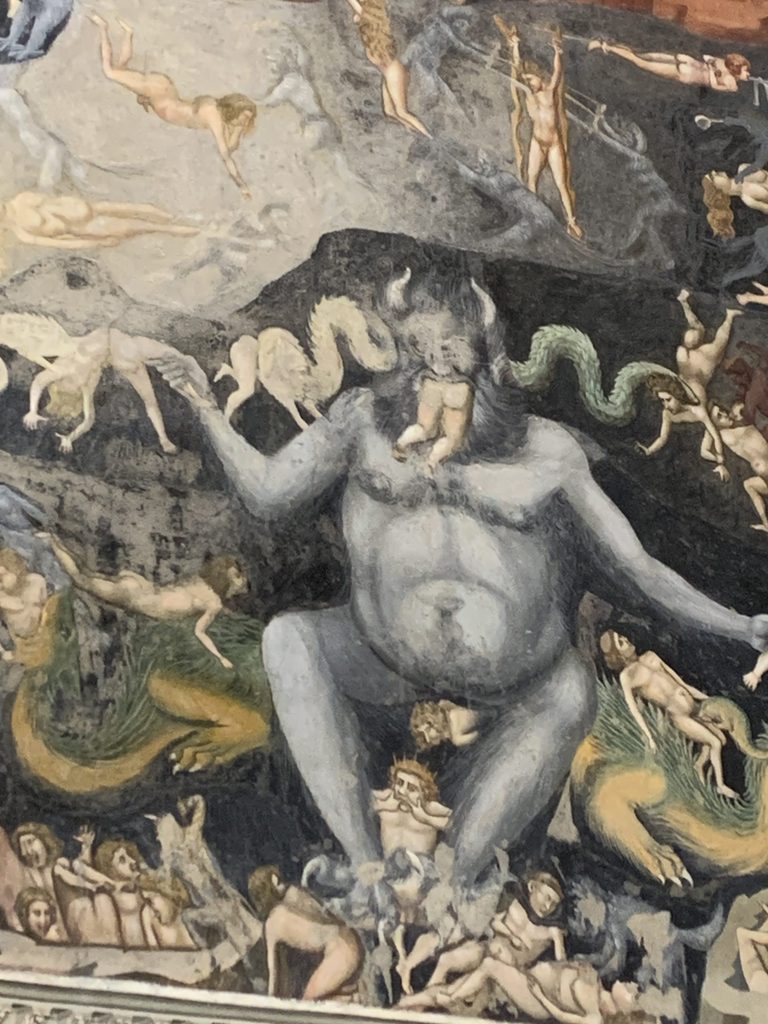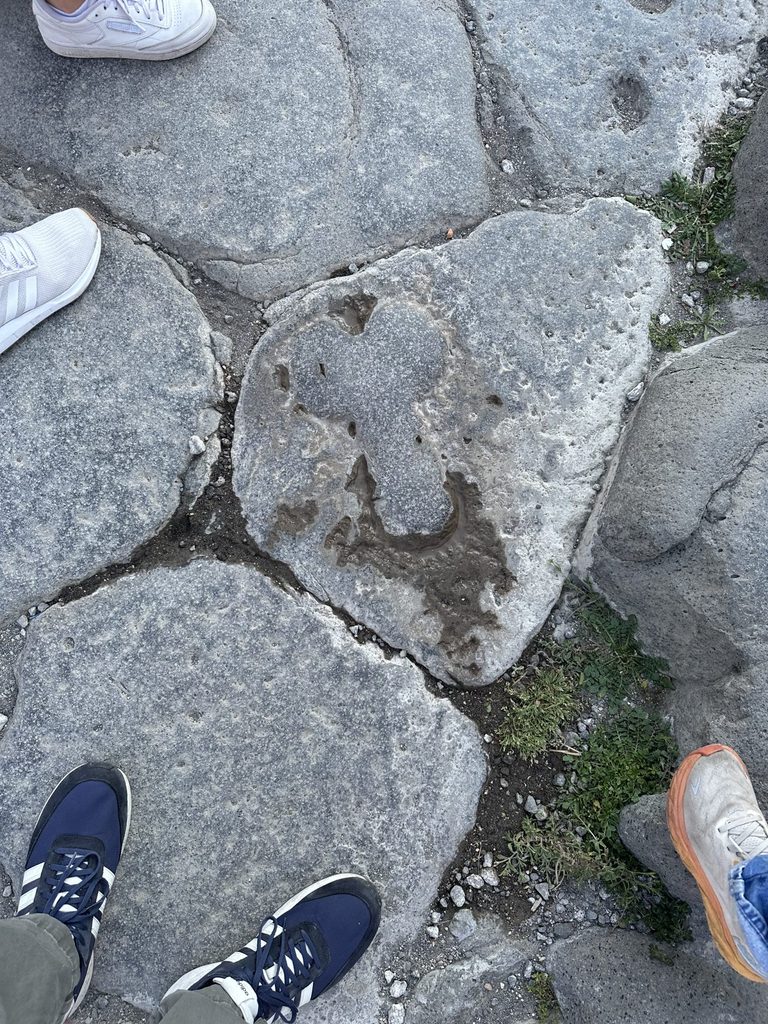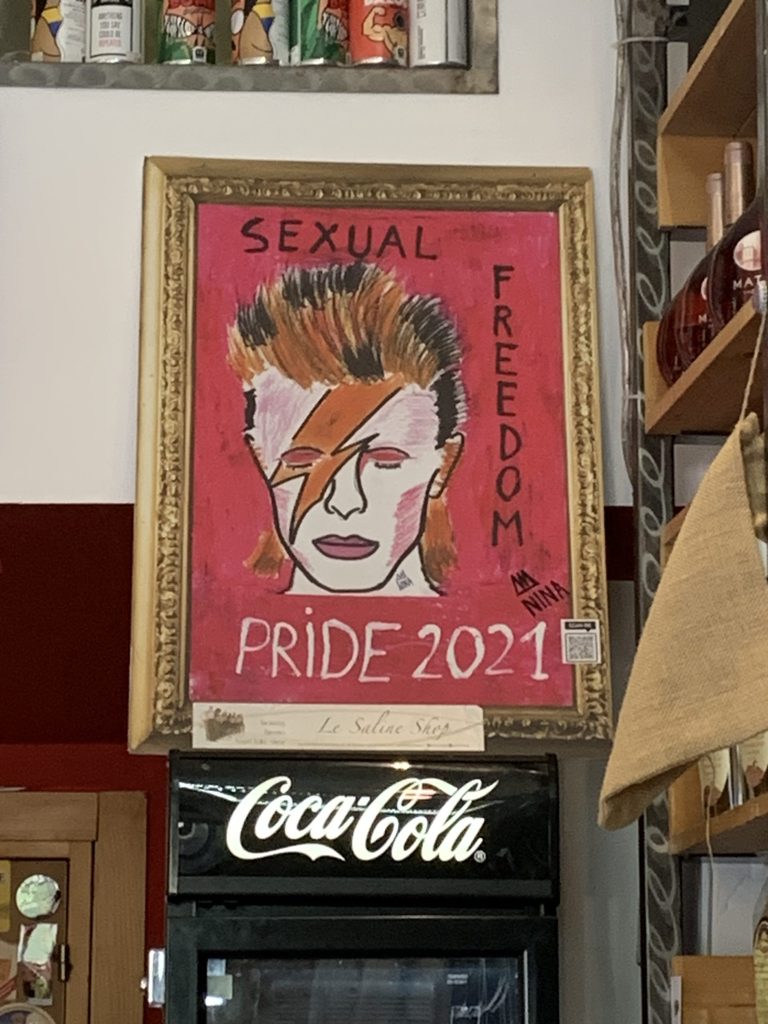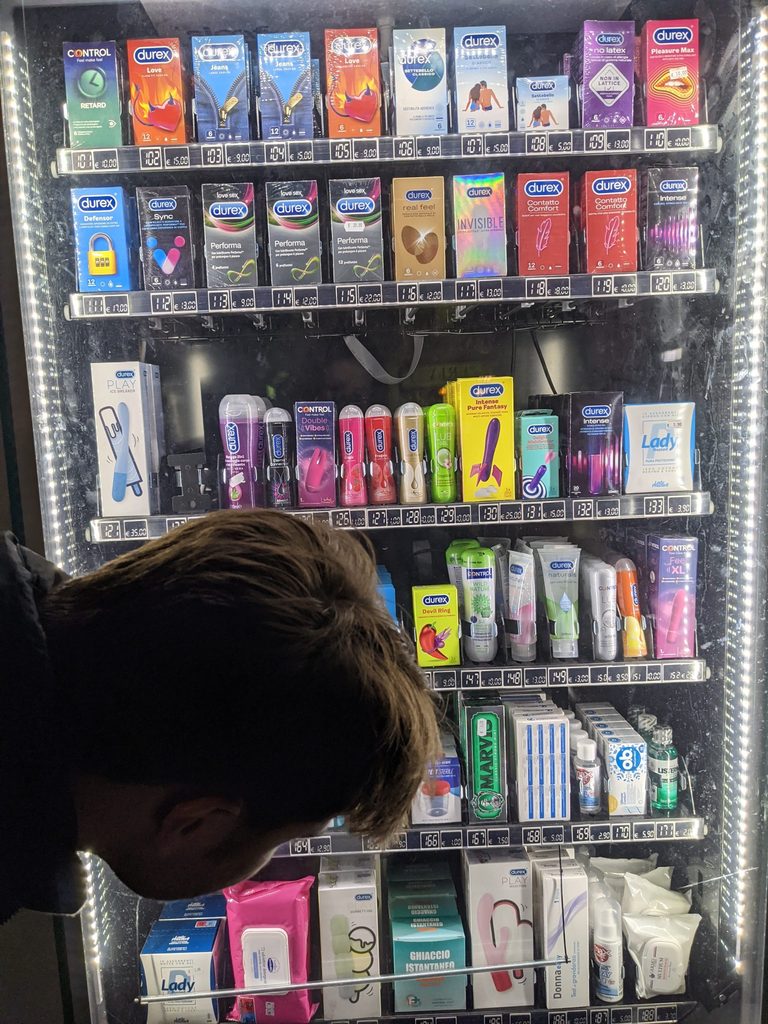In order to enter the Vatican your shoulders and knees must be covered, but as soon as
you turn the corner you might just see a Roman vending machine selling vibrators or an apron
depicting a heavily photoshopped image of the statue of David. While many cities are known for
being centers of sexual freedom, the Catholic Church’s strong presence in Rome adds another
dimension to the relationship between the city and sexuality. While I did not grow up Catholic,
my understanding is that sexuality is very restricted by the Catholic Church and that there is a
lot of shame and stigma around premarital sex, masturbation, reproductive rights, and queer
identities. 96% of Italians have been baptized Catholic and while I’m sure there is a lot of
diversity within the Catholic faith, I have been curious to understand how the Catholic Church
and Italian culture interacts with expressions of sexuality within Rome. In other words, how does
having the Vatican in Rome affect the modern city’s relationship to sexuality?
I will explore a variety of expressions of sexuality that I have noticed during my time in Italy, how they differ from what I’ve experienced in the US, and analyze what factors might be contributing to Rome’s
relationship with sex.

One factor of sexuality in Rome and Italy which I find particularly interesting is how they choose to acknowledge and present their history regarding sexuality. For instance, on my tour of Pompeii, my tour guide talked a lot about sexuality within Pompeii. She discussed the prevalence of sex work in the city and even took us to the ruins of a Pompeii brothel. She showed us penis graffiti throughout Pompeii which served as a navigational tool by pointing in the direction of brothels as well as the frescoes which depicted different sex positions, one of which may have been a homosexual position. I was amazed by how openly our tour guide was talking about the history of sex in this ancient city. Rome has a very different approach to its history of sex. For instance, before taking the history classes on this program, I had no clue that there were many popes who had concubines and had even fathered children. This history of Rome and the Vatican is so rarely discussed, and rather the Catholic Church attempts to portray itself and its history as holy and pure. This purity is also depicted in the artwork I have seen around Rome, such almost always depicting Jesus being covered by a loincloth. Even on tours of more ancient Roman sites, brothels, concubines, and queer sex are rarely mentioned (in addition to a variety topics surrounding the darker histories of Rome which these tours often seem to steer away from). That being said, Rome does have a collection of beautiful sculptures and paintings depicting the human body and depicting ancient myths that surround the ideas of sex and rape, such as Bernini’s “Apollo and Daphne” and “The Rape of Prosperpina”.
Overall, I think the role of the Vatican in Rome affects how Rome curates its history, especially in regard
to its history of sexuality.

Any American visiting Rome for even a few days will probably notice the PDA — public displays of affection. You will see couples heavily making out on park benches, against walls, and on the bus. It is unlike anything I have ever seen before while living in America. Catholic guilt does not seem to apply to these heavy public displays of affection. This made me think about the US’s own issues regarding sexuality and modesty from our Protestant culture. In the US such public displays of affection are much less common or intense, perhaps because of American values surrounding privacy and modesty. It’s also important, of course, to note who is participating in these public displays of affection, which is almost entirely heterosexual couples.
While I am not very familiar with the queer experience in Rome, it does not seem to me that many queer couples feel comfortable showing affection on the streets.
Last summer, I was in Rome with my then-girlfriend. We hoped to be able to participate in romance of the city but being unfamiliar with our surroundings, knowing the strength of Catholic culture in the city, and seeing no other queer couples on the streets, we felt instead that we must remain incognito.

Additionally, you might notice that Italians wear less revealing clothing. I have definitely felt out of place wearing certain clothes that I don’t even think twice about in the United States.
Italians dress for the seasons and generally dress fancier than Americans. However, I wonder if Catholicism’s ideas around controlling sexuality, especially women’s sexuality, is also a factor.
The strong Catholic culture within Rome might be creating societal expectations for their women’s behavior and sexuality, such as dressing more modestly.
As a young woman who’s been living in Rome for a couple months, I have experienced a significant amount of catcalls and sexual advances both on the streets and in bars. Both my female roommates and myself have experienced far more catcalls in a short period of time than we usually do in the United States. However, the catcalls also have a different quality to them than the ones I’ve experienced in the US. In the US, catcalls are often kind of vulgar and feel more threatening, usually including specific comments about my body. In Rome, however, the catcalls are in some ways more respectful, mostly just saying things like “ciao bella, che bellisima”. I find it interesting that despite the larger quantity of catcalls I am receiving, I still feel incredibly safe traveling around Rome. Perhaps, it is more accepted in Italy to tell women they are beautiful but my own American perspective makes me categorize these experiences as catcalls rather than compliments. While catcalling is associated with a risk of sexual violence in America, perhaps it is not as connected in Italy, especially since the remarks are usually less vulgar in nature.

Finally, I want to discuss in more detail the intersection of Catholicism, Rome, and queerness. I have already mentioned the lack of queer couples I see on the streets of Rome.
However, there are definitely still queer spaces within the city. For instance, on the outskirts of Rome there is a club called Qube. Qube has different themed nights but Friday nights are called Muccassassina, in which Qube is transformed into a specifically gay night club.
During our third weekend in Rome, some friends and I were invited by a young queer Italian woman to go to Muccassassina. It also happened to be Good Friday. After attending the Stations of the Cross at the Collosseum, we immediately progressed to the Qube and what we found was far greater than any of my expectations.
The Qube has three floors which get progressively more intense as you move up them. There is music, dancing, and a bar on each floor but on the third floor there is also a large stage. Being Easter weekend, there were about 5 male gogo dancers wearing very small bunny costumes on stage. I was pleasantly surprised to see many people in the club wearing outfits that were clearly queer, adrogenous, and over the top. Imagine people in corsets, angel wings, thigh high boots, and leather vests. The lack of queer people on the street that I had been experiencing was suddenly gone. Additionally, the club was an extremely sexual space.

Without going into too much detail, at one point the main performer on stage engaged in a few sexual acts with a couple audience members. We were all shocked by this bold and public performance of sexuality. Say what you will about the Qube, but I have never been in such a queer space and to find it in a city that is the literal home to the Catholic Church was shocking.
Since queerness is so subversive in a Catholic society, I wondered if queer spaces become even more radically supportive of sexuality and gender expression and if there is more freedom to be even more subversive. Also shocking is how many straight people were there too. Despite the craziness and the queerness of what was going on around them, so many straight people were still there including many young Italian men trying to pick up women. This suggests at least a certain amount of acceptance of queerness, especially among the younger generations of Italians.
Overall, there is a lot observe in regards to sexuality in Rome. I find that history courses often breeze past discussions of sexuality just because it continues to be an embarrassing and taboo topic, but I would love to explore more about the history of Rome and the Catholic Church’s relationship to sex and how that has affected the modern city.